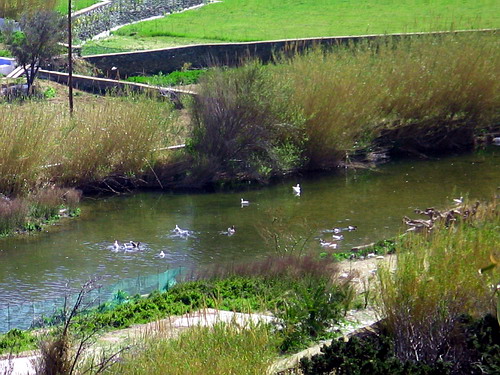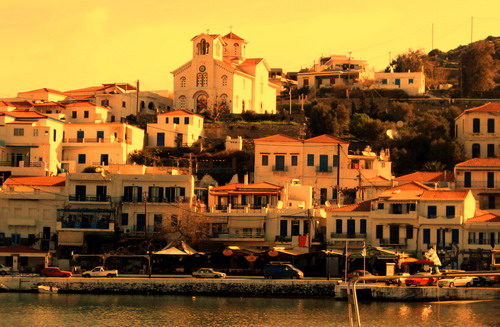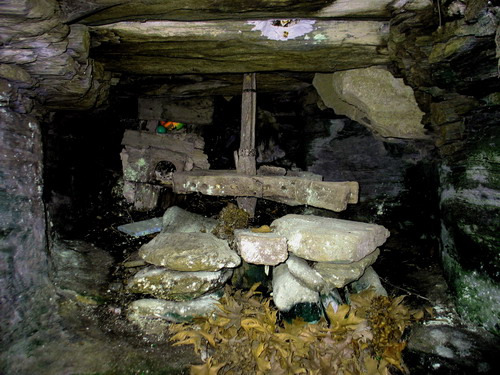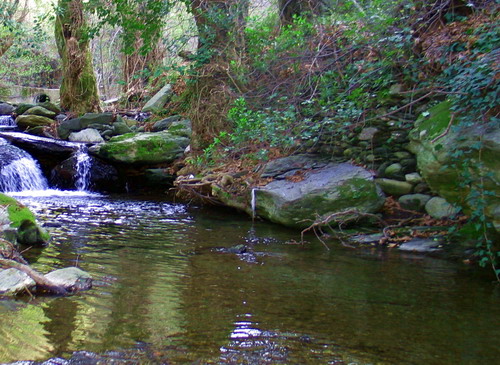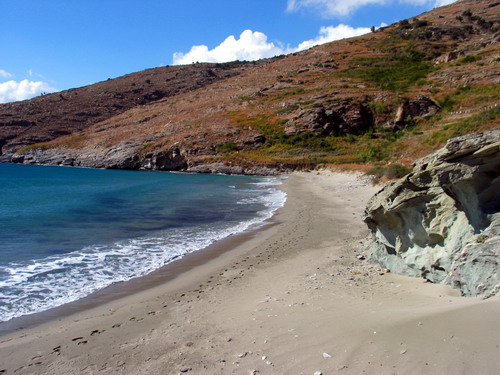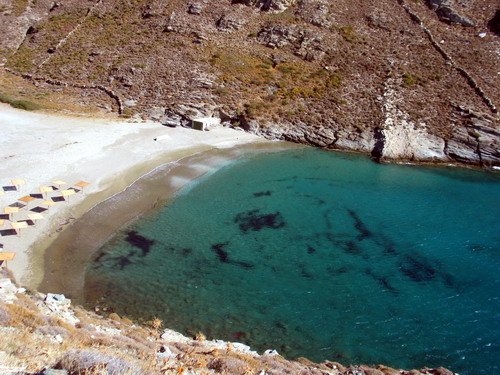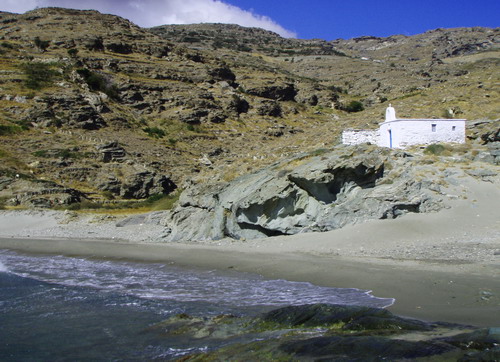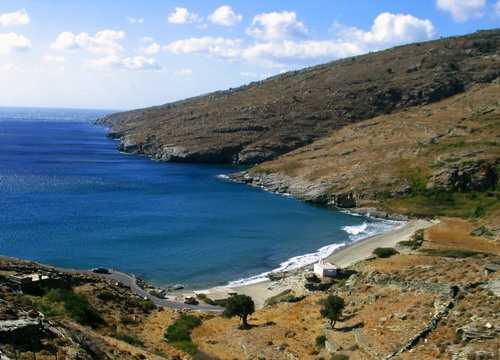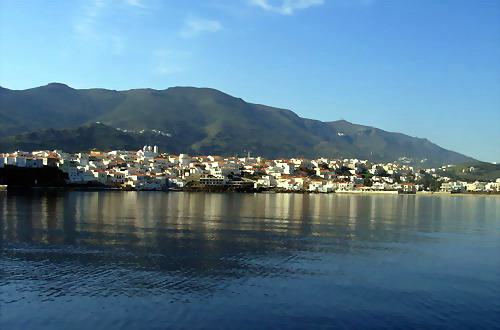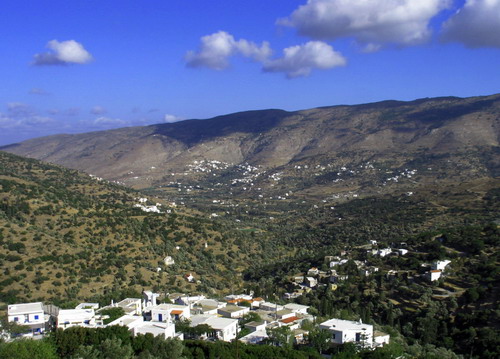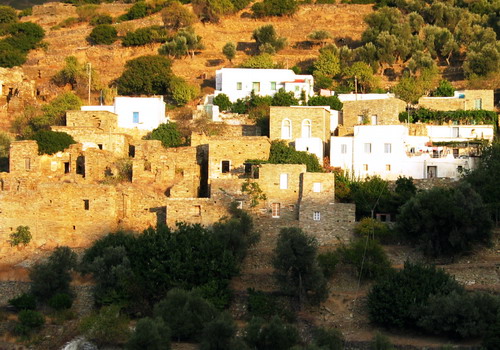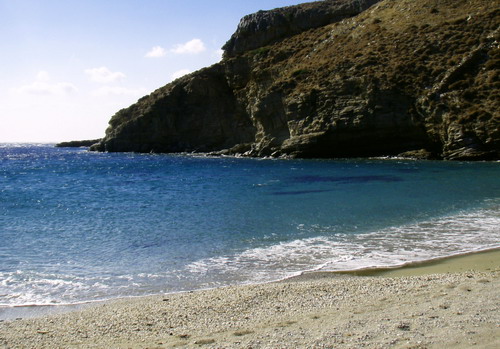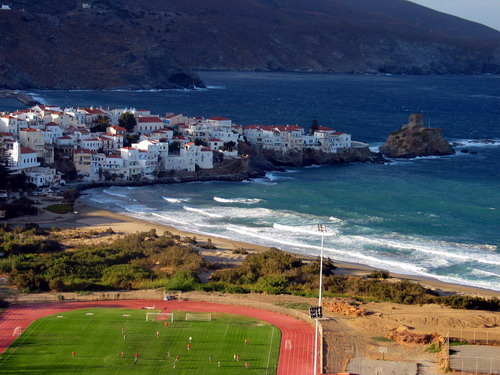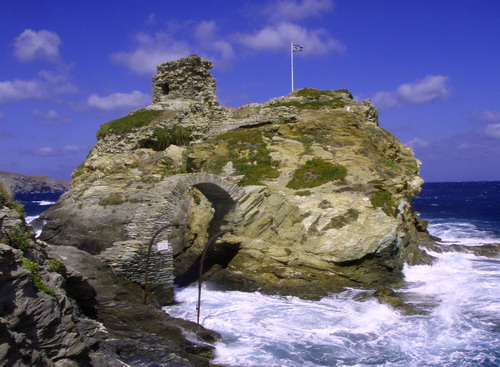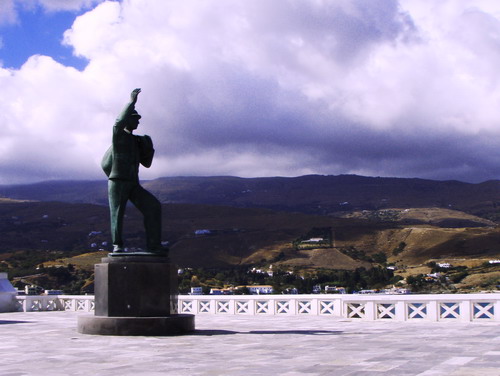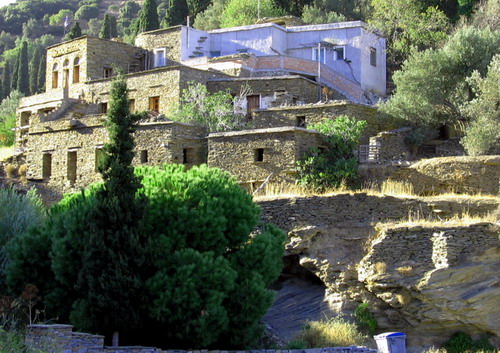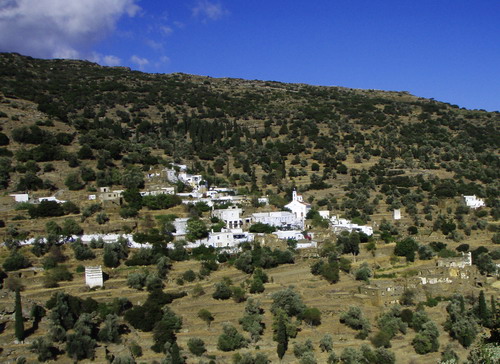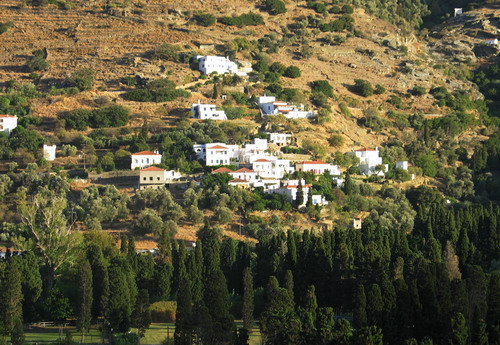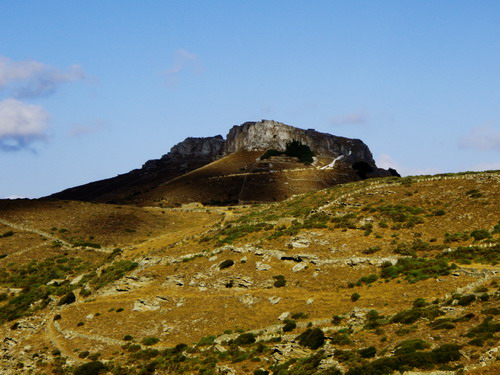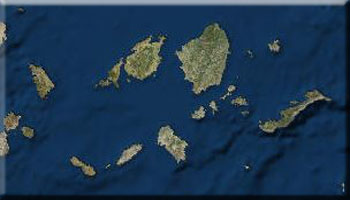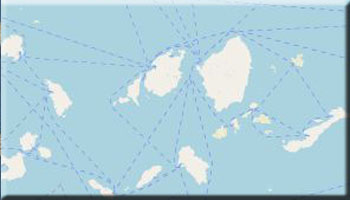The island was likely named after a Cretan general by the name of Andros. It was also known as Lasia, a reference to its verdant landscape, and Hydroussa, a reference to its water resources. In some sources, the island appears as Gavros, a name preserved today in the name of the island's port, Gavrio. Archaeological evidence supports the existence of developed settlements on the island since at least the Mycenaean period.
The island achieved prominence in the Geometric Period (9th-7th centuries B.C.), as suggested by ruins of a settlement at Zagora on the northwestern coast near Zaganiari. The island's size, location, sheltered harbors, dense vegetation, and water attracted settlers' interest early on and since 3000 B.C. settlements flourished at Strofila and Makroyiali; at Plaka, there's evidence of settlements from 2000-1500 B.C., while Zagora peaked in 1000 B.C. Ypsili, a settlement near Aprovatou, peaked a little later.
In Classical times, Palaiopolis served as the island's capital, and the city's coinage around this time suggests great prosperity. These finds, along with the Hermes of Andros, are exhibited at the Archaeological Museum in Andros Town (Hora).
Andros came under Roman rule, before passing into the hands of the Venetians and then the Ottomans. The Byzantine churches on the island-two examples are Taxiarhis at Ypsilos at Melida and Koimissis Theotokou at Messaria-date from the 11th century. The Monastery of Ayia (also known as the monastery of Zoodohos Piyi) near Batsi was founded in the 14th century; foundations for the Moni Ayiou Nikolaou were laid in 1560 and the monastery underwent restorations in the 18th century. The Moni Panachrantou was founded in the mid-17th century. The first established pre-independence revolutionary school was housed in Ayia Triada at Korthi in 1813.
The banner of the revolution was raised on the island on May 10, 1821, by Theofilos Kairis and the island actively participated in the struggle for independence.
In modern times, the island developed its merchant marine sector. Dimitrios Moraitis inaugurated the first route linking Greece to North America in the early 20th century; in 1939 Andros's shipping registry ranked second, after that of Piraeus.










